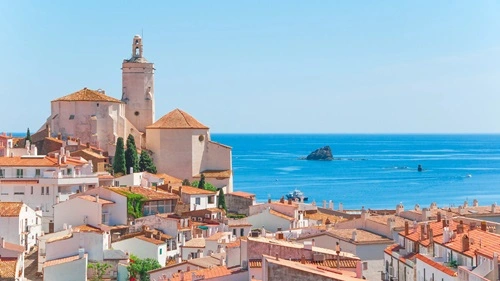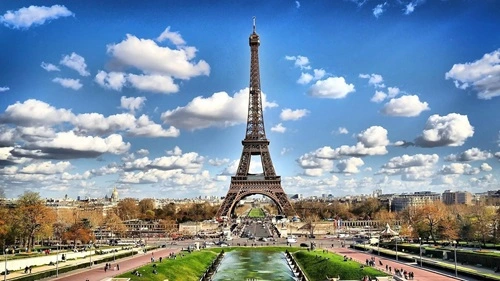Spain, with its enchanting landscapes, passionate culture, and vibrant history, has captivated people worldwide. This Mediterranean country offers a rich tapestry of traditions and influences that reflect its diverse past and unique cultural evolution. From its world-famous festivals to unique laws and customs, Spain is a country full of fascinating quirks. Here are some fun and intriguing facts about Spain that will make you want to explore it even more.

1. Spain Has the Second Largest Number of UNESCO World Heritage Sites
Spain is home to 49 UNESCO World Heritage Sites, making it second only to Italy in Europe. These include historical landmarks like the Alhambra in Granada, Sagrada Familia in Barcelona, and the Roman aqueduct in Segovia. The UNESCO sites cover everything from ancient cave paintings to Gothic cathedrals, underscoring Spain’s rich historical and cultural diversity. Visiting these sites provides a glimpse into Spain’s role as a melting pot of cultures and its significant historical contributions.
2. Siestas Are Real (But Not Everywhere)
Spain is famous for the “siesta,” the midday break that traditionally allows people to relax and avoid the afternoon heat. This break generally occurs from 2 p.m. to 5 p.m., though it’s less common now in bustling cities like Madrid and Barcelona, where people follow a more conventional work schedule. In smaller towns, though, many businesses still close for siesta, giving locals and visitors alike the chance to slow down and embrace a more relaxed pace of life.
3. Spain Has a Unique Approach to New Year’s Eve
In Spain, a New Year’s Eve tradition called “Nochevieja” involves eating 12 grapes at midnight—one for each stroke of the clock. Each grape represents a month of good luck for the coming year, and it’s essential to finish all 12 grapes before the final chime. This tradition, dating back to the early 20th century, is believed to have started in the Alicante region due to an abundant grape harvest. Today, this ritual is embraced nationwide, with people gathering in plazas or watching the countdown on TV, grape clusters in hand.
4. Spain Is the World’s Largest Olive Oil Producer
Spain produces over 40% of the world’s olive oil, with the majority coming from the Andalusian region. Spanish olive oil is renowned for its high quality, and it is a staple in traditional Spanish cooking, from paella to gazpacho. In fact, Spain’s Jaén province alone produces more olive oil than all of Italy. A trip to Spain isn’t complete without trying some local olive oil, especially the extra virgin variety, known for its exceptional flavor and health benefits.
5. The Running of the Bulls: Not Just for the Brave
The Running of the Bulls, or “Encierro,” is one of Spain’s most thrilling and famous events. Held in Pamplona during the San Fermín festival in July, this daring tradition sees participants running ahead of a herd of bulls down narrow city streets. Though it may seem like a modern thrill-seeking event, the tradition has ancient roots, dating back to the 14th century when herders would drive bulls through the town to the bullring. Today, it attracts thrill-seekers from around the world, though it’s not without its risks!
6. Flamenco Isn’t Just a Dance; It’s an Art Form
Flamenco, often associated with Spanish culture, is more than just a dance—it’s a passionate expression of emotion that combines singing, guitar playing, and intricate dance movements. Originating in the Andalusian region, flamenco is deeply rooted in Spanish gypsy culture, with influences from Moorish, Jewish, and Indian traditions. It was officially recognized as an art form by UNESCO, and experiencing an authentic flamenco performance is a must for anyone wanting to connect with Spain’s soulful artistic side.
7. Spain’s Unusual Festivals: From Tomato Fights to Baby Jumping
Spain is home to some of the world’s most unique festivals. Perhaps the most famous is La Tomatina in Buñol, where participants hurl tomatoes at each other in a massive food fight that turns the town streets red. Another lesser-known but equally unique festival is El Colacho, where men dressed as devils leap over rows of babies in a ritual meant to cleanse them of sin. Each festival has deep cultural roots and offers a unique glimpse into Spain’s vibrant, sometimes quirky, traditions.
8. Spain Was Once a Global Empire
In the 16th and 17th centuries, Spain was a major global power with an empire that spanned the Americas, parts of Europe, Asia, and Africa. Known as the Spanish Empire, this period saw Spain exert significant influence, with territories as far-reaching as the Philippines, Mexico, and parts of the United States. Spanish influence remains evident in the widespread use of the Spanish language, which is the second most spoken language globally today.
9. The Spanish Love for Football (Soccer)
Football, or soccer as it’s known in the United States, is a huge part of Spanish culture. Spain is home to two of the world’s most famous football clubs, Real Madrid and FC Barcelona, both of which have passionate fan bases and storied histories. Spain’s national team, known as “La Roja,” won the FIFA World Cup in 2010, solidifying its place in football history. Football culture in Spain isn’t just about the game; it’s a way of life, bringing people together to celebrate a shared passion.
10. A Country of Many Languages
While Spanish (or Castilian) is the official language, Spain is linguistically diverse, with several regional languages, including Catalan, Basque, and Galician, spoken throughout the country. Catalan is widely spoken in Catalonia, while Galician is predominant in the Galicia region. In the Basque Country, the Basque language, Euskara, is spoken and is unique as it has no known relation to any other language family. This linguistic diversity is a testament to Spain’s varied cultural regions and distinct historical influences.
11. Spain Is the Birthplace of Some of the World’s Greatest Artists
Spain has produced some of the world’s most influential artists, including Pablo Picasso, Salvador Dalí, and Francisco Goya. Picasso, a pioneer of Cubism, revolutionized art in the 20th century, while Dalí’s surrealist works captured the imagination with his dreamlike visions. Goya, often called the last of the Old Masters, produced powerful works that delved into Spanish history and social issues. Visiting Spanish art museums like the Prado Museum in Madrid or the Dalí Theatre-Museum in Figueres offers art lovers a chance to appreciate these iconic artists’ masterpieces.
12. Spain’s Iconic Cuisine: More Than Just Paella
Spanish cuisine is known for its diverse flavors and regional specialties. While paella from Valencia is globally famous, there’s so much more to Spanish gastronomy. Tapas, small dishes served with drinks, are popular nationwide, and each region has its signature ingredients and cooking styles. Jamón ibérico, a cured ham, is another Spanish delicacy that reflects the country’s culinary expertise. Spain’s rich wine culture is also worth mentioning—Spain has over 60 wine regions, and its Rioja wines are renowned worldwide.
13. Spaniards Live Longer, and the Lifestyle Might Be Why
Spain has one of the highest life expectancies in the world, with an average lifespan of around 83 years. Experts attribute this longevity to a combination of factors, including the Mediterranean diet rich in olive oil, fresh vegetables, and fish, along with a social culture that emphasizes family, relaxation, and community. Spaniards take time to enjoy meals with loved ones, a lifestyle that may contribute to their overall health and happiness.
Conclusion
Spain is a country where history, art, tradition, and modernity seamlessly blend, creating a vibrant cultural mosaic. From thrilling festivals and ancient landmarks to culinary delights and artistic contributions, Spain offers endless opportunities for discovery and enjoyment. So, whether you’re interested in exploring historical sites, joining in on unique celebrations, or savoring world-class cuisine, Spain has something for everyone. These fun facts reveal only a fraction of what makes Spain such an enchanting destination.



